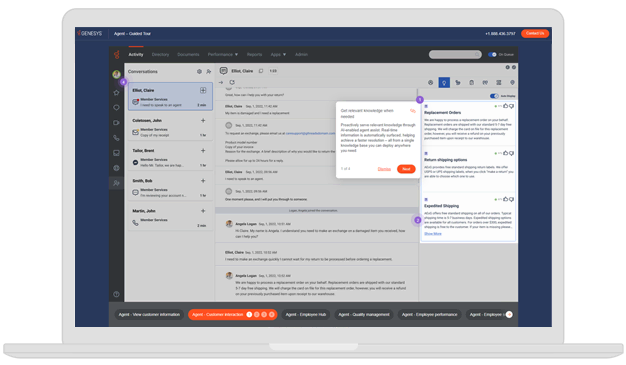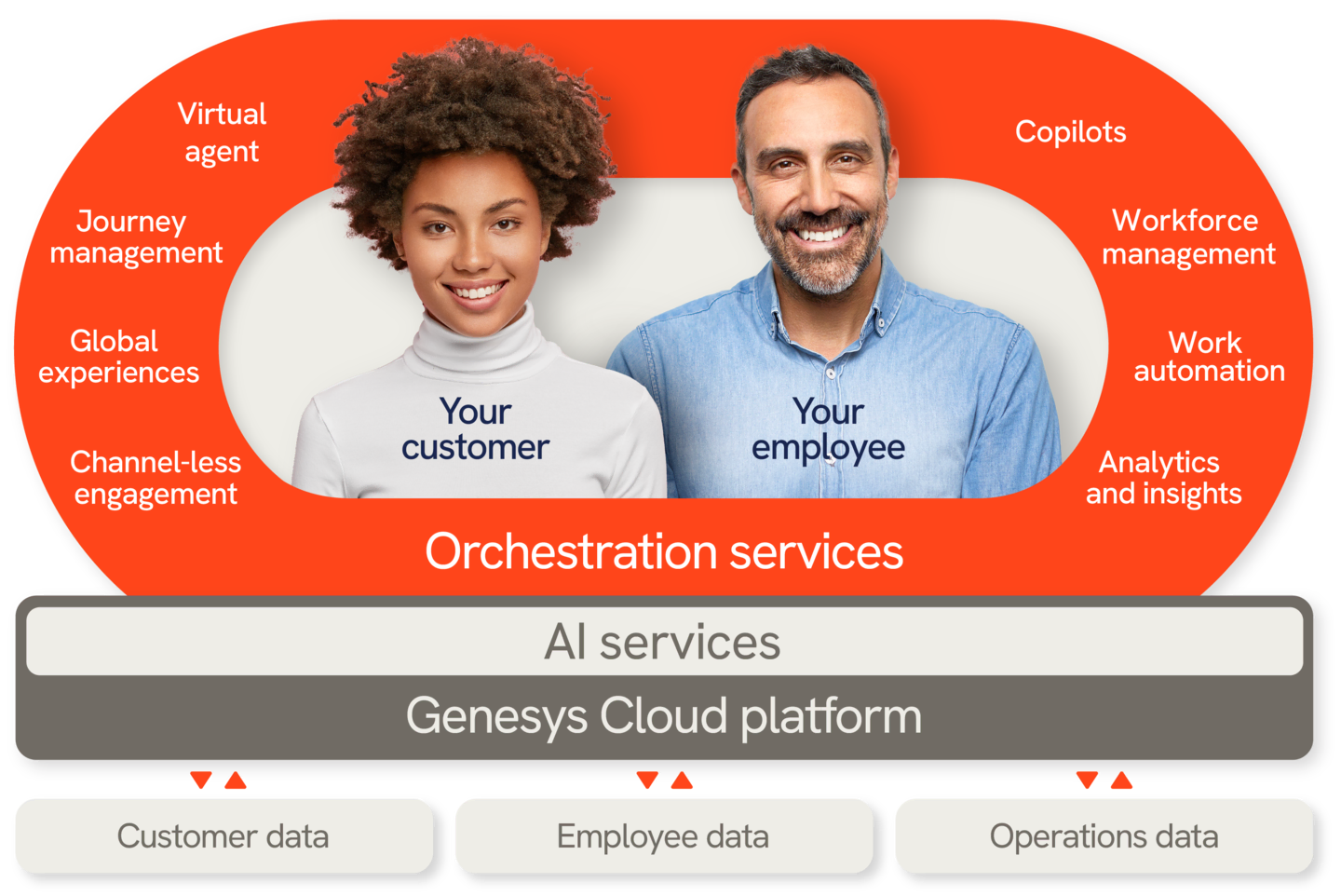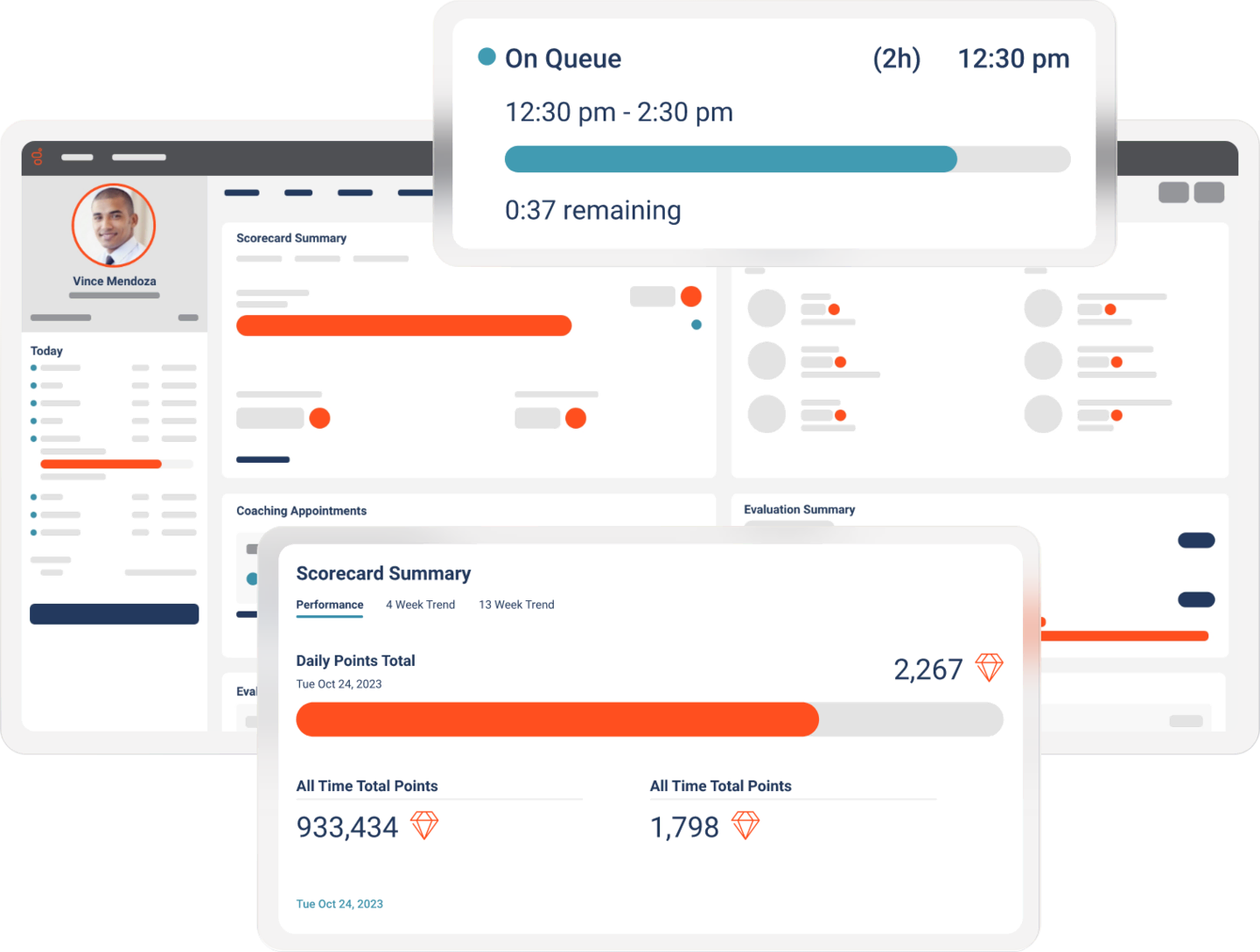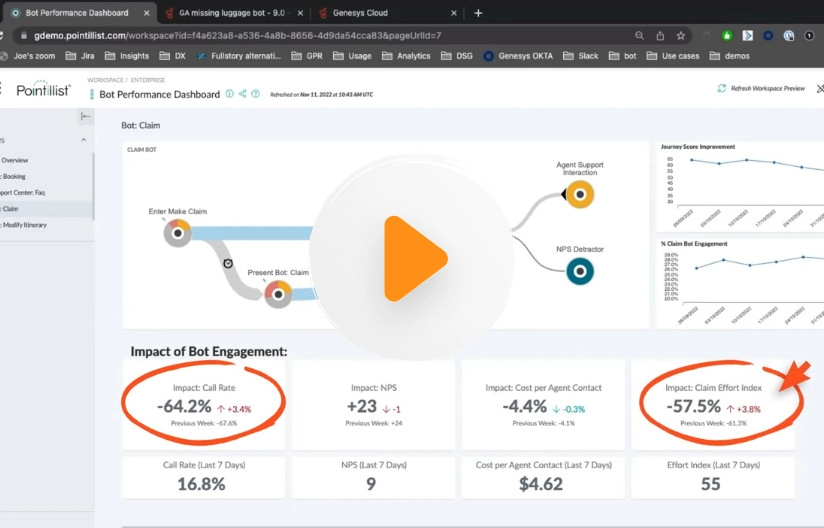AI predicts customer needs, identifies trends and helps make data-driven service decisions. Predictive, conversational and generative AI provide smarter self-service and intelligent automation, helping direct customers to the right call center agent. Automated listening and learning, real-time analysis of digital and human interactions, and gamification support a more productive and efficient workforce. And root cause analysis and customizable alerts help optimize customer journeys faster.
When it comes to Genesys AI, it’s easy to use out of the box, and easily configurable to optimize for your specific needs. And customer privacy is protected, as Genesys AI is built with maximum adherence to AI ethics.










